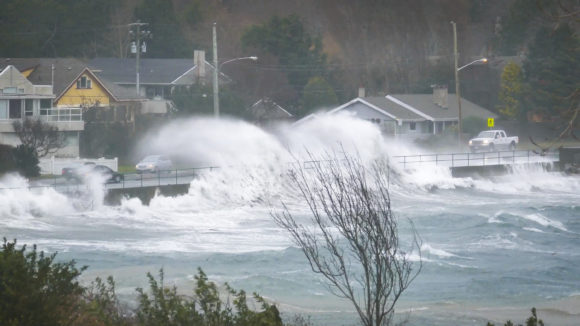Starting Friday, July 1, state and local governments will have to conduct a sea-level impact study if they build anything near Florida’s coastline, the result of a state law passed in 2020.
Although the law applies only to government entities using state funds, it could have an impact on neighboring private properties and their insurance premiums. It’s possible that insurers could use the studies to help determine risk from floods, pollution and other hazards in some coastal areas, attorneys said.
The Florida Legislature in 2020 approved Senate Bill 178, sponsored by then-Sen. Jose Javier Rodriguez, D-Miami. He left the Senate in 2020 and has been nominated by President Biden to be assistant U.S. secretary of labor.

The rules to implement the bill were finalized last year by the state Department of Environmental Protection. The law, considered one of Florida government’s first acknowledgments of rising seas and their complications, requires the sea-level impact project study, or SLIP study, to be done for all government structures built in the coastal building zone using state funds.
The statute defines the building zone as most of the beach areas in Florida: the land from the high-water line to an area 1,500 feet landward of the coastal construction control line. The control line is determined by the Department of Environmental Protection, and the new law and rules appear to go well beyond that line.
Government-built structures in that area must now undergo an assessment of the potential damage over the next 50 years from higher seas, flooding, storm surges and wave action. Some analyses predict as much as 8.5 feet of sea-level rise by the year 2100. The DEP requires the use of the National Oceanic and Atmospheric Administration’s projections.
“By implementing these risk-based assessments, infrastructure in Florida will be able to tangibly prepare for flooding risks and sea level rise,” Alexandra Kuchta, press secretary for the DEP, said in an email.
The studies, to be signed by a professional engineer, must also analyze the risks and costs of maintaining, repairing and building the structure, along with public safety and environmental impacts. Those include the potential release of pollutants and the exposure of electrical and explosion hazards, according to a legislative analysis of the law.
Builders must also examine alternatives for the coastal structure’s design and location, the Holland & Knight law firm said in bulletin about the law. The studies will be made public, accessible on the DEP’s website. Although not mandatory until Friday, some 30 projects already have submitted SLIP studies. For the Caledesi Island Marina & Bathhouse off Clearwater, for example, the study notes that “the high wind risk in this project location may contribute to a higher risk of explosion due to potential downed powerlines.”
DEP lists a number of strategies project owners can use to mitigate the impact of sea rise, including building in elevated areas, employing flood barriers and planting more shrubbery.
The 2020 law has some teeth in it to ensure the studies are done.
“If a state-financed constructor begins construction of a coastal structure without first submitting a SLIP study as required, then DEP is authorized to institute a civil action for injunctive relief to cease further construction on the coastal structure and seek recovery of all or a portion of state funds expended on the structure,” the firm explained.
DEP has created an online tool that helps users visualize future sea levels and coastal flood hazards.
Holland & Knight attorneys could not be reached for comment this week, but the June 24 email alert noted that two bills were introduced in the regular 2022 session of the Legislature, which would have expanded requirements of the law. Those bills did not pass but could be brought up again in 2023, the firm said.
Topics Florida
Was this article valuable?
Here are more articles you may enjoy.



 Coverage Needed: Hundreds of Thousands in SE Now in Flood Zones With New Maps
Coverage Needed: Hundreds of Thousands in SE Now in Flood Zones With New Maps  Microsoft Tells Texas Agencies They Were Exposed in Russian Hack
Microsoft Tells Texas Agencies They Were Exposed in Russian Hack  House Collapses Into Flood-Swollen River Near Minnesota Dam Amid Storms
House Collapses Into Flood-Swollen River Near Minnesota Dam Amid Storms  US Roof Maintenance Lags: Hanover
US Roof Maintenance Lags: Hanover 


